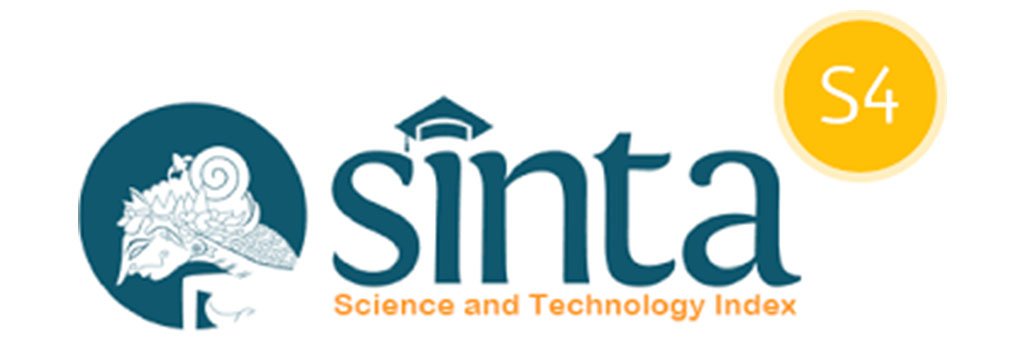Pricing Practices of Nepalese Manufacturing Firms
Abstract
This research examined the pricing practices of manufacturing firms within the Bankey district of Nepal, focusing on both the objectives and methods employed. Utilizing a Likert-scale questionnaire administered to 67 companies, the study revealed that pricing objectives were predominantly qualitative, prioritizing customer-centric considerations over quantitative targets. The primary pricing methods observed were cost-plus pricing and market-average pricing. Statistical analysis demonstrated a significant relationship between the stated pricing objectives and the methods selected. The study's practical contribution underscores the importance of an integrated pricing framework, wherein managers align their pricing methods with their strategic objectives to enhance performance.
References
Avlonitis, G. J., & Indounas, K. A. (2006). Pricing practices of service organizations. Journal of Services Marketing, 20(5), 346–356.
Cahill, D.J. (1994). Pricing: how not to succeed. Pricing Strategy and Practice, 2(1), 21-25.
Campbell, M. (2007). Says who? How the source of price information and affect influence perceived price (un)fairness. Journal of Marketing Research, 44(2), 261–271.
Cant, M. C., Wiid, J. & Sephapo, M. C. (2016). Key factors influencing pricing strategies for small business enterprises (SMEs): Are they important? The Journal of Applied Business Research, 32(6), 1737-1750.
Cunningham, D. & Hornby, W. (1993). Pricing decision in small firms: Theory and practice. Management Decision, 31(7), 46-55.
Dearden, J. (1978). Cost accounting comes to service industries. Harvard Business Review, 56(5), 132–140.
Dolan, R.J. & Simon, D. (1996). Power Pricing: How Managing Price Transforms the Bottom Line. The Free Press, New York, NY.
Dorward, N. (1987). The Pricing Decision: Economic Theory and Business Practice. Harper & Row, London.
Dutta, S., Zbaracki, M. & Bergen, M. (2003). Pricing process as a capability: a case study. Strategic Management Journal, 24(7), 615-630.
Forman, H. & Hunt, J.M. (2005). Managing the influence of internal and external determinants on international industrial pricing strategies. Industrial Marketing Management, 34(2), 133–146.
Hinterhuber, A. (2004). Towards value-based pricing—an integrative framework for decision-making. Industrial Marketing Management, 33(8), 765–778.
Homburg, C., & Totzek, D. (2011). Preismanagement auf B2B-Märkten. Zentrale Entscheidungsfelder und Erfolgsfaktoren. In C. Homburg & D. Totzek (Eds.), Preismanagement auf Business-to-Business Märkten. Preisstrategie - Preisbestimmung - Preisdurch-setzung (pp. 13–69). Gabler, Wiesbaden.
Ingenbleek, P.T.M., Debruyne, M., Frambach, R.T. & Verhallen, T.M.M. (2003). Successful new product pricing practices: a contingency approach. Marketing Letters, 14(4), 289-305.
Ingenbleek, P.T.M., & Lans, I. A. (2013). Relating price strategies and price-setting practices. European Journal of Marketing, 47(1/2), 27-48.
Jhamb, D., Kaur, S., Pandey, S. & Mittal, A. (2024). Pricing model, engagement model and firm performance: evidence from Indian data science industry. Benchmarking An International Journal, 31(9), 2821-2838.
Kalyanaram, G., Saini, G.K., Mony, S. & Jayasankaran, N. (2022). Behavioral response to online pricing: empirical and managerial insights. Journal of Indian Business Research, 14(2), 167-185.
Kindström, D., Kowalkowski, C. & Sandberg, E. (2012). Enabling service innovation: A dynamic capabilities approach. Journal of Business Research, 66(8), 1063–1073.
Kotler, P. (1991). Marketing Management: Analysis, Planning, Implementation, and Control. Prentice-Hall, Englewood Cliffs, NJ.
Kurtz, D.L. & Clow, K.E. (1998). Services Marketing. John Wiley & Sons, New York, NY.
Lovelock, C.H. (1996). Services Marketing. 3rd ed., Prentice-Hall, Englewood Cliffs, NJ.
Malleret, V. (2006). Value creation through service offers. European Management Journal, 24(1), 106–116.
Meehan, J., Simonetto, M., Montan, L. & Goodin, C. (2011). Pricing and Profitability Management. A Practical Guide for Business Leaders. Wiley, Singapore.
Meidan, A. (1996). Marketing Financial Services. Macmillan Business Press, London.
Monroe, K. B., Rikala, V., & Somervuori, O. (2015). Examining the application of behavioral price research in business-to-business markets. Industrial Marketing Management, 47, 17–25.
Myers, M.B. (1997). The pricing of export products: why aren’t managers satisfied with the results? Journal of World Business, 32(3), 277-89.
Nagle, T.T. & Hogan, R.K. (2006). The Strategy and Tactics of Pricing: A Guide to Profitable Decision Making. Prentice Hall, Englewood Cliffs, NJ.
Noble, P.M. & Gruca, T.S. (1999). Industrial pricing: theory and managerial practice. Marketing Science, 18(3), 435-454.
O’Connor, P. (2003). On-line pricing: an analysis of hotel company practices. Cornell Hotel and Restaurant Administration Quarterly, 44(1), 88-96.
Palmer, A. (1994). Principles of Services Marketing. McGraw-Hill, London.
Patterson, P. G., Johnson, L. W., & Spreng, R. A. (1997). Modeling determinants of customer satisfaction for business-to-business professional services. Journal of the Academy of Marketing Science, 25(1), 4–17.
Potter, D.V. (2000). Discovering hidden pricing power. Business Horizons, 43(6), 41-48.
Ratza, C.L. (1993). A client-driven model for service pricing. Journal of Professional Services Marketing, 8(2), 55-64.
Simon, H. (1992). Pricing opportunities and how to exploit them. Sloan Management Review, 33(2), 55-65.
Ulaga, W. & Reinartz, W. J. (2011). Hybrid offerings: How manufacturing firms combine goods and services successfully. Journal of Marketing, 75(6), 5–23.
Zeithaml, V.A. & Bitner, M.J. (1996). Services Marketing. McGraw-Hill, Singapore.
Zeithaml, V.A., Parasuraman, A. & Berry, L.L. (1985). Problems and strategies in services marketing. Journal of Marketing, 49(4), 33-46.
Copyright (c) 2025 Nabaraj Adhikari, Eva RA Sitanggang

This work is licensed under a Creative Commons Attribution-ShareAlike 4.0 International License.


